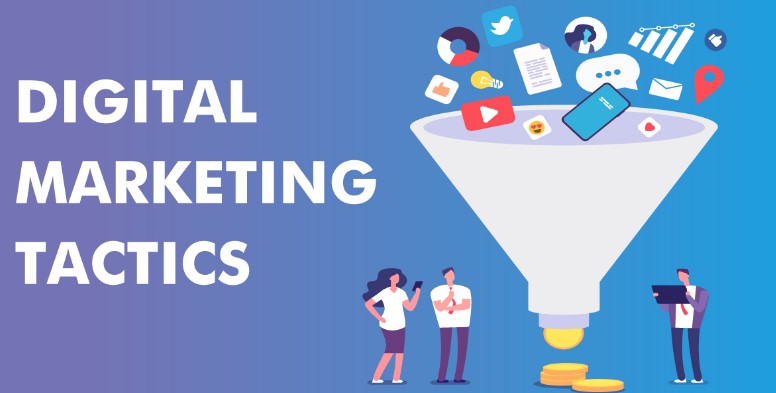The landscape of digital marketing has undergone a seismic transformation over the past decade, evolving from simple website promotion to an intricate ecosystem of channels, technologies, and strategies that collectively determine business success or failure. As consumer behaviour continues to shift toward digital-first experiences, organisations that master this complex environment gain disproportionate market share, while those relying on outdated approaches find themselves increasingly irrelevant.
The Growing Divide Between Digital Leaders and Laggards

Recent research reveals an alarming performance gap that continues to widen year-on-year. According to a comprehensive study by McKinsey:
- Top-quartile digital performers achieve 3.3x greater revenue growth than bottom-quartile competitors
- 83% of marketers acknowledge they cannot accurately measure the ROI of their digital initiatives
- Companies with integrated, data-driven strategies generate 20% more customer lifetime value
- Only 11% of businesses have successfully implemented an omnichannel strategy despite 87% acknowledging its importance
“The most significant competitive advantage today isn’t budget size—it’s the ability to extract actionable insights from data and rapidly implement those insights across customer touchpoints,” explains digital strategist Sarah Chen, whose consultancy works with businesses from Jurong to Tanjong Pagar across Singapore’s varied commercial landscape.
Why Traditional Approaches Are Becoming Increasingly Ineffective
Several fundamental shifts have rendered conventional marketing strategies obsolete:
- The fragmentation of attention across an expanding universe of platforms and channels
- Rapidly evolving privacy regulations that restrict data collection and targeting capabilities
- Algorithmic gatekeepers that determine content visibility and distribution
- Increasing consumer expectations for personalised, relevant experiences
As MediaOne research demonstrates, businesses struggling to adapt to these changes typically experience declining ROI across their marketing investments despite increasing expenditure—the digital equivalent of running faster just to stay in place.
The Technology Stack Paralysis Problem
Today’s marketers face unprecedented technological complexity that often results in inefficient implementation.
- The average enterprise now uses over 120 different marketing technology applications
- 67% of marketing leaders report that technology integration is their biggest challenge
- Companies replace or add major marketing systems every 12-18 months on average
- 61% of marketers believe their organisation’s technology strategy lacks coherence
“We’re seeing organisations investing millions in sophisticated technologies without first establishing the strategic foundation and operational processes needed to extract value from these investments,” notes digital transformation expert Michael Tan. “It’s equivalent to installing a Formula 1 engine in a vehicle without a proper chassis or trained driver.”
The Shift from Campaigns to Customer Experience Ecosystems
Forward-thinking organisations have moved beyond the campaign mentality to build comprehensive customer experience architectures. This approach:
- Recognises that customer journeys are non-linear and span multiple touchpoints
- Prioritises cohesive experiences over channel-specific optimisation
- Leverages first-party data as a strategic asset rather than a tactical resource
- Measures success through customer lifetime value rather than short-term conversions
When selecting a digital marketing agency, businesses should evaluate their capability to design and implement these interconnected ecosystems rather than simply execute standalone campaigns.
Data Integration: The Hidden Competitive Advantage
The organisations achieving exceptional performance have mastered data unification across previously siloed sources. They effectively:
- Combine behavioural, transactional, and demographic data to create comprehensive customer profiles
- Implement cross-channel attribution models that accurately value each touchpoint’s contribution
- Deploy predictive analytics to anticipate customer needs and optimise resource allocation
- Utilise real-time data for dynamic content personalisation and journey orchestration
“The ability to centralise and activate data represents perhaps the single most important capability for marketing effectiveness today,” explains data scientist Wei Lin. “Yet most organisations continue to operate with fragmented data environments that prevent them from developing accurate customer understanding.”
The Automation Revolution in Customer Journeys
Sophisticated marketing operations now leverage automation to deliver contextually relevant experiences at scale:
- 79% of top-performing companies utilise marketing automation compared to only 39% of underperformers
- Businesses implementing journey-based automation report 200% higher email open rates and 50% higher conversion rates
- Automated behavioural trigger programmes generate 5x the click-through rates of standard outbound campaigns
- Companies with mature automation capabilities achieve 14.5% increase in sales productivity and 12.2% reduction in marketing overhead
As marketing experts point out, effective automation requires more than technology implementation—it demands careful journey mapping, content strategy alignment, and continuous optimisation based on performance data.
The Emerging Privacy-First Marketing Paradigm

Major shifts in data privacy regulations and platform policies are forcing fundamental strategy revisions:
- Third-party cookie deprecation affects approximately 70% of current digital marketing tactics
- Apple’s tracking changes have reduced targeting effectiveness for approximately 80% of iOS users
- 65% of consumers say they’re concerned about how companies use their personal data
- Businesses with first-party data strategies report 2.9x better performance than those reliant on third-party data
Organisations across Singapore, from Tampines to the Central Business District, are racing to develop consent-based data collection frameworks and first-party data strategies that provide personalisation without privacy compromise.
Measurement Evolution: Beyond Last-Click Attribution
Sophisticated performance measurement has moved far beyond simplistic attribution models:
- Multi-touch attribution models provide 30-40% more accurate assessment of channel value
- Incrementality testing reveals that up to 65% of digital ad spending may go toward conversions that would have occurred naturally
- Unified marketing measurement approaches combining both top-down and bottom-up methodologies show 20-30% improvement in marketing efficiency
- Media mix modelling helps identify diminishing returns thresholds that optimise budget allocation
“The organisations achieving the highest ROI have moved beyond attribution as their primary measurement framework to embrace experimental design methodologies that truly isolate marketing impact,” notes analytics expert Dr. Lim from the National University of Singapore.
Building the Right Capabilities for Tomorrow’s Marketing Landscape

The competitive advantage gained through digital excellence continues to grow as consumer behaviour increasingly shifts online. Organisations that fail to develop sophisticated capabilities risk not just marketing underperformance but existential business challenges.
For leadership teams evaluating their digital approach, the critical question isn’t whether transformation is necessary—it’s how quickly they can build or access the capabilities required to compete effectively in an increasingly complex environment.
As the digital landscape continues to evolve at unprecedented speed, the businesses that thrive will be those that combine strategic clarity, technological sophistication, and organisational agility. Whether developed internally or accessed through partnerships with a specialised digital marketing agency, these capabilities now represent the foundation of sustainable competitive advantage.








